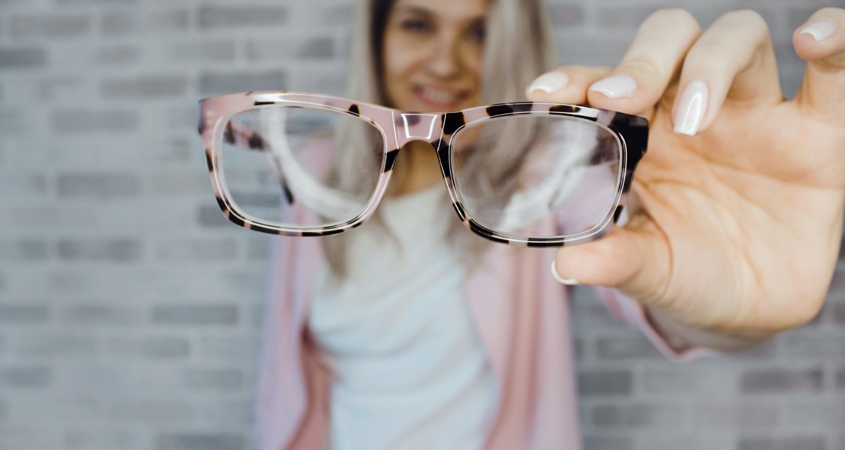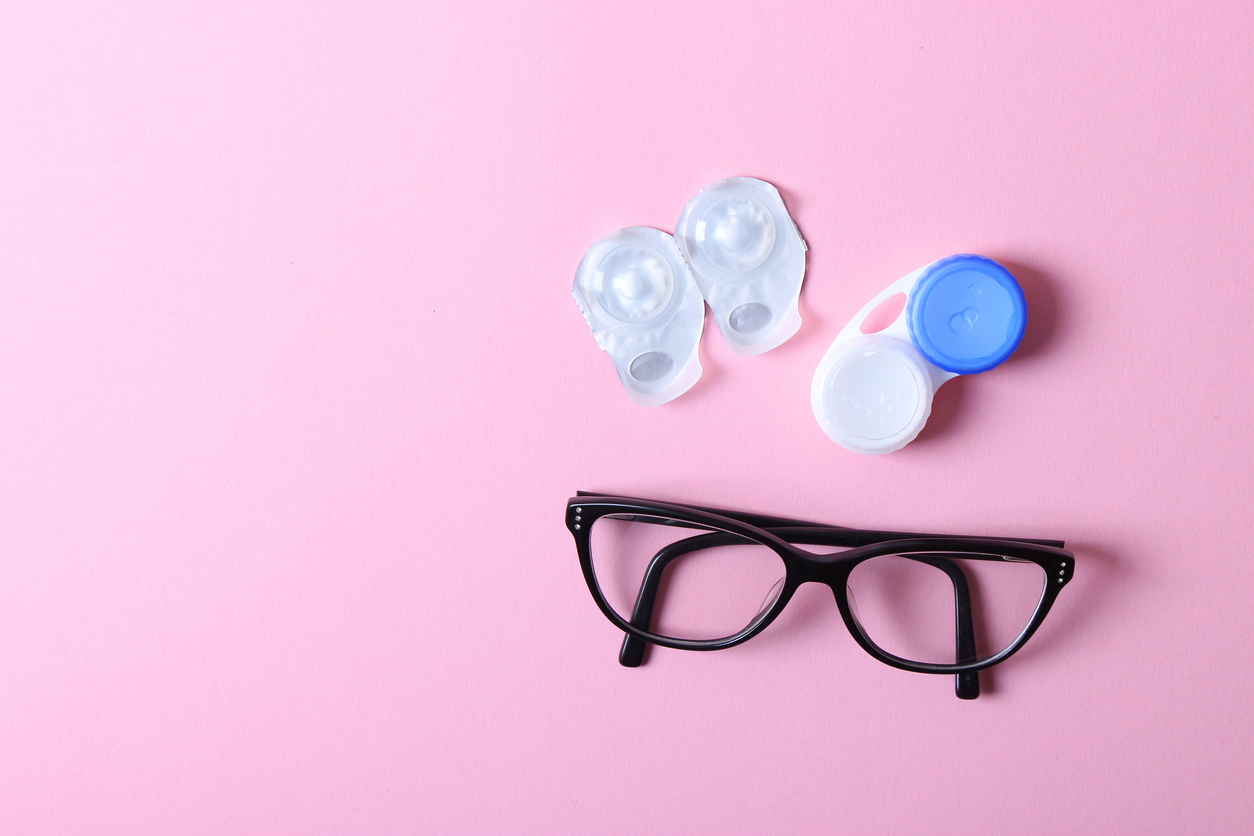PRK vs. LASIK Process & Recovery
If you’ve been told you’re not a candidate for LASIK, you’re not entirely out of laser eye surgery options. Those who aren’t a good fit for LASIK (Laser-Assisted In Situ Keratomileusis) will most likely qualify for an alternative vision correction surgery such as PRK (photorefractive keratectomy).
PRK is similar surgical procedure to a LASIK, but it corrects different parts of the cornea. It’s not only an alternative for patients with thinner corneas but also for those with dry eyes or diseases of the corneal surface. Keep reading to learn more about this process and what it can offer you compared to LASIK.
What is LASIK?
LASIK procedures begins with the creation of a thin corneal flap in the cornea using either a microkeratome blade or a femtosecond laser. This flap is gently folded back to allow the surgeon to access the underlying corneal tissue. Then, an excimer laser reshapes the cornea in a pre-specified pattern, customized for each patient’s vision correction needs. After the corneal reshaping, the flap is repositioned back over the treated area, where it adheres naturally without the need for sutures.
What Is PRK?
PRK is a refractive surgery that reshapes the cornea with a laser, so the light entering the eye is focused on the retina to produce clear images. This is slightly different compared to LASIK. Both procedures use a laser to clear the outer layer of your eye; LASIK creates a thin flap in the cornea, while PRK removes a cornea layer that grows back over time. This is what makes it a better option for those with thin corneas.
What Does LASIK Surgery Entail?

LASIK surgery, a highly advanced and precise procedure for correcting vision, involves several meticulous steps. The process begins with the patient’s eyes being numbed using special eye drops, ensuring comfort throughout the surgery. A device known as a microkeratome or a femtosecond laser is then employed to create a thin, hinged flap on the surface of the cornea, the clear, dome-shaped front part of the eye. This flap is carefully lifted, providing the surgeon access to the underlying corneal tissue. An excimer laser, known for its ultra-precision, is used next to reshape the cornea based on the patient’s unique vision requirements. This reshaping is crucial as it allows light to be more accurately focused onto the retina, resulting in improved vision. Once the cornea is reshaped, the surgeon meticulously repositions the flap back into place, where it naturally adheres without the need for sutures.
The entire procedure is characterized by its speed and efficiency, typically taking only about 20 to 30 minutes for both eyes. With minimal discomfort and a rapid recovery time, LASIK has become a popular choice for individuals seeking to reduce their dependence on glasses or contact lenses.
What Does PRK Surgery Entail?
The Photorefractive Keratectomy (PRK) procedure, while similar to LASIK in its goal to correct vision, involves a distinctly different process, particularly in how it treats the cornea. The procedure commences with the application of numbing eye drops, ensuring the patient’s comfort and eliminating any sensation of pain during the surgery. To prevent any involuntary blinking, a specialized device, known as an eyelid speculum, is gently placed to hold the eyelids open, ensuring a stable and unobstructed surgical field.
Once the eye is prepared, the key differentiator of PRK comes into play. Unlike LASIK, where a thin flap is created on the corneal surface, PRK involves the complete removal of the cornea’s outermost layer, known as the epithelium. This removal is a delicate process, often performed using a precise surgical instrument, alcohol solution, or a specialized brush. The goal is to carefully clear the epithelium to expose the underlying stromal tissue, which is the part of the cornea that will be reshaped.
With the stromal layer exposed, the surgeon then uses an excimer laser to meticulously reshape the cornea. This laser, renowned for its accuracy, emits a cool ultraviolet light beam to remove microscopic amounts of tissue from the cornea. The reshaping is customized for each patient, based on detailed pre-surgery measurements and calculations, to correct refractive errors such as nearsightedness, farsightedness, or astigmatism. By reshaping the cornea, PRK changes the way light rays enter the eye, focusing them properly onto the retina, which results in clearer vision.
After the laser treatment, a bandage contact lens is often placed on the cornea to protect the eye and enhance comfort during the initial stages of healing. The epithelial layer naturally regenerates over the course of several days, gradually healing and covering the treated area.
The entire PRK procedure is relatively quick, generally completed within 15 to 30 minutes for both eyes. It is a preferred method for patients with certain corneal conditions, such as a thinner cornea, where creating a flap, as in LASIK, might not be advisable. While the recovery period for PRK is typically longer than LASIK, with some discomfort as the epithelium heals, the final outcomes in terms of vision correction are comparable, making PRK a valuable and effective option for laser eye surgery.
LASIK Recovery
The recovery from LASIK is relatively quick. Most patients notice improved vision almost immediately after the procedure, although complete stabilization of vision may take a few days to a few weeks. Discomfort is usually minimal and can often be managed with over-the-counter pain relief. Patients are typically able to return to normal activities, including work, within a day or two, although they should avoid strenuous activities and contact sports for a period to prevent any injury to the eyes. Follow-up visits are necessary to monitor the healing process and to ensure the best possible outcome.
How Long Is PRK Recovery?
Recovery time can vary for PRK patients from several days to several weeks, generally longer than a LASIK recovery (which some recover from within a few hours). Eyes may feel sore or scratchy, and halos or glare around lights at night may be an issue for a few days. To help protect your eyes and promote the healing process, your doctor will place a bandage contact lens in your eye.
With both procedures, it’s essential to minimize activity and sun exposure for at least the first week to avoid vision problems. And don’t rub your eyes, which can damage your cornea. Your doctor will review all of these outpatient procedures with you to make sure you’re clear and comfortable.
Why Choose Visionary Eye Doctors for PRK?
Visionary Eye Doctors is proud to offer expert PRK procedures. As a member of the trials that culminated in the FDA approval of PRK, our own Dr. J. Alberto Martinez continues to be an eye surgeon at the forefront of this leading-edge technology.
The first step in determining your candidacy for any procedure is to schedule a consultation and comprehensive eye exam with one of our experienced surgeons. We will establish if PRK is the best path for your long-term visual acuity by utilizing advanced diagnostic technology.
Ready to find out if you’re a candidate? Call our office today at 301-867-7920 to schedule a consultation with our expert surgeons. You can also schedule an appointment online.




